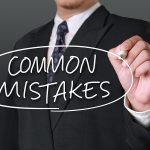Estate Planning Checklist
Dying without an estate plan creates additional costs and eliminates any chance your wishes for loved ones will be followed after your death. Typically, people think about a will when they marry or have children, and then do not think about wills or estate plans until they retire. While a will is important, there are other estate planning documents that are just as important, says the recent article “10 Steps to Writing a Will” from U.S. News & World Report. To help identify those needs, I prepared an estate planning checklist which you can find below.
Most assets, including retirement accounts and insurance policy proceeds, can be transferred to heirs outside of a will, if they have designated beneficiaries. However, the outcome of an estate may be more impacted by Power of Attorney for financial matters and Medical Power of Attorney documents. To help figure out what you may need, you can use this article as an estate planning checklist.
Here are nine specific tasks that need to be completed for your estate plan to be effective. The documents should be prepared based upon your state’s law with the help of a qualified estate planning attorney.
- Find an estate planning attorney who is experienced with the laws of your state.
- Select beneficiaries for your estate plan.
- Check beneficiaries on non-probate assets to make sure they are current.
- Decide who will be the fiduciaries named in your estate plan (e.g. executor, trustee)
- Name a guardian for minor children, if yours are still young.
There are also tasks for your own care while you are living, in case of incapacity:
- Name a person for the Power of Attorney role. They will be your representative for legal and financial matters, but only while you are living.
- Name a person for the Medical Power of Attorney to make decisions on your behalf, if you cannot.
- Create a Directive to Physicians (Living Will), to explain your wishes for medical care, particularly concerning end-of-life care.
- Tell the these people that you have chosen them and discuss these roles and their responsibilities with them if you are ready
As you go through your estate planning checklist, be realistic about the people you are naming to serve as fiduciaries. If you have a child who is not good with managing money, a trust can be set up to distribute assets according to your wishes: by age or accomplishments, like finishing college, going to rehab, or maintaining a steady work history, and they should not be in charge of your money.
Do not forget to tell family members where they can find your last will and other estate documents. You should also talk with them about your digital assets. If accounts are protected by passwords or facial recognition, find out if the digital platform has a process for your executor to legally obtain access to your digital assets.
Finally, do not neglect updating your estate plan every three to four years or anytime you have a major life event. An estate plan is like a house: it needs regular maintenance. Old estate plans can disinherit family members or lead to the wrong person being in charge of your estate. See this article for my ideas as to when to update your estate plan and what to consider. You might find reviewing the estate planning checklist helpful at that time as well. https://galligan-law.com/when-to-update-your-estate-plan/
An experienced estate planning attorney will make the process easier and straightforward for you and your loved ones.
Reference: U.S. News & World Report (May 13, 2021) “10 Steps to Writing a Will”

